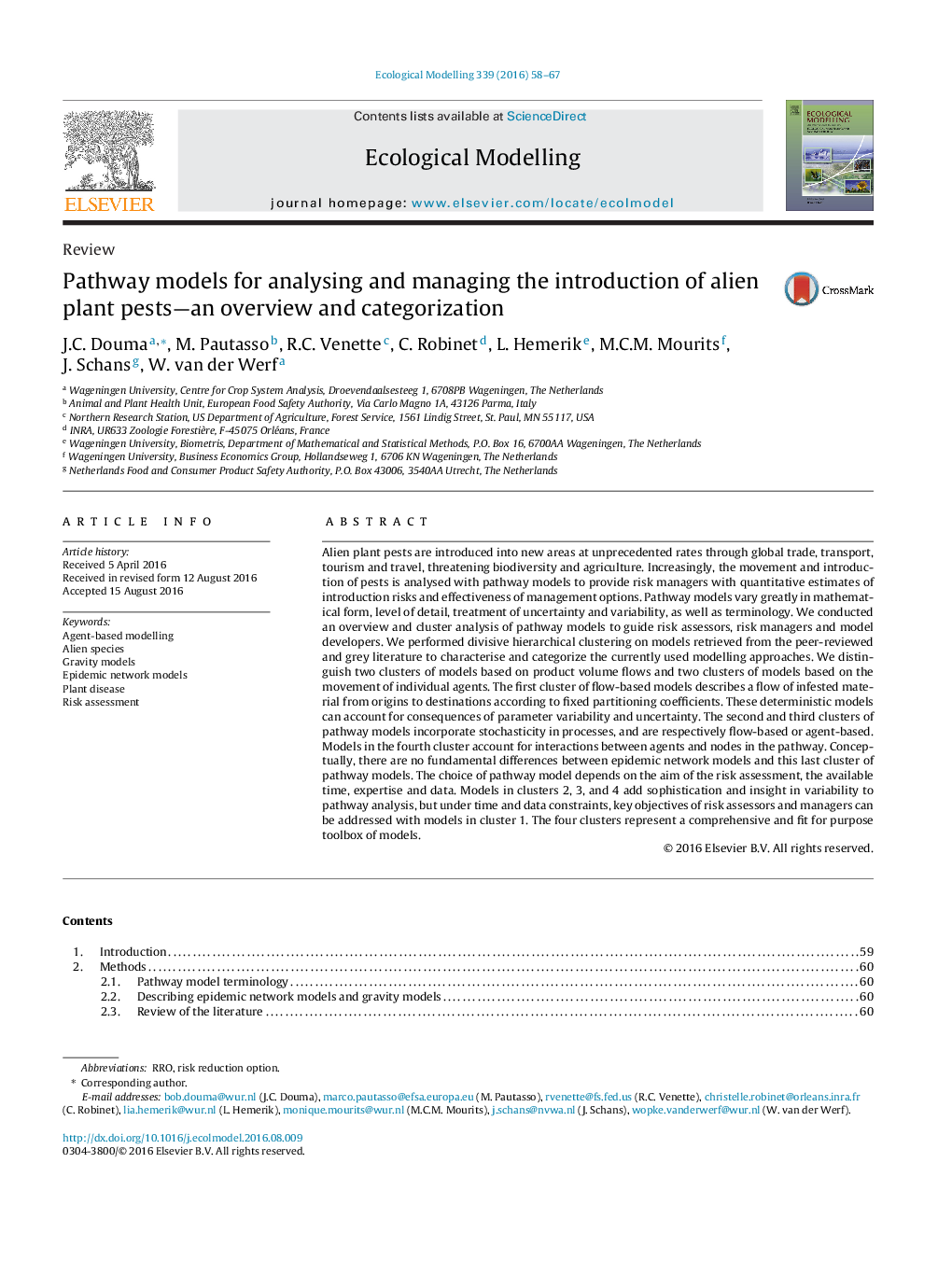| کد مقاله | کد نشریه | سال انتشار | مقاله انگلیسی | نسخه تمام متن |
|---|---|---|---|---|
| 6296023 | 1617408 | 2016 | 10 صفحه PDF | دانلود رایگان |
عنوان انگلیسی مقاله ISI
Pathway models for analysing and managing the introduction of alien plant pestsâ¿¿an overview and categorization
دانلود مقاله + سفارش ترجمه
دانلود مقاله ISI انگلیسی
رایگان برای ایرانیان
کلمات کلیدی
موضوعات مرتبط
علوم زیستی و بیوفناوری
علوم کشاورزی و بیولوژیک
بوم شناسی، تکامل، رفتار و سامانه شناسی
پیش نمایش صفحه اول مقاله

چکیده انگلیسی
Alien plant pests are introduced into new areas at unprecedented rates through global trade, transport, tourism and travel, threatening biodiversity and agriculture. Increasingly, the movement and introduction of pests is analysed with pathway models to provide risk managers with quantitative estimates of introduction risks and effectiveness of management options. Pathway models vary greatly in mathematical form, level of detail, treatment of uncertainty and variability, as well as terminology. We conducted an overview and cluster analysis of pathway models to guide risk assessors, risk managers and model developers. We performed divisive hierarchical clustering on models retrieved from the peer-reviewed and grey literature to characterise and categorize the currently used modelling approaches. We distinguish two clusters of models based on product volume flows and two clusters of models based on the movement of individual agents. The first cluster of flow-based models describes a flow of infested material from origins to destinations according to fixed partitioning coefficients. These deterministic models can account for consequences of parameter variability and uncertainty. The second and third clusters of pathway models incorporate stochasticity in processes, and are respectively flow-based or agent-based. Models in the fourth cluster account for interactions between agents and nodes in the pathway. Conceptually, there are no fundamental differences between epidemic network models and this last cluster of pathway models. The choice of pathway model depends on the aim of the risk assessment, the available time, expertise and data. Models in clusters 2, 3, and 4 add sophistication and insight in variability to pathway analysis, but under time and data constraints, key objectives of risk assessors and managers can be addressed with models in cluster 1. The four clusters represent a comprehensive and fit for purpose toolbox of models.
ناشر
Database: Elsevier - ScienceDirect (ساینس دایرکت)
Journal: Ecological Modelling - Volume 339, 10 November 2016, Pages 58-67
Journal: Ecological Modelling - Volume 339, 10 November 2016, Pages 58-67
نویسندگان
J.C. Douma, M. Pautasso, R.C. Venette, C. Robinet, L. Hemerik, M.C.M. Mourits, J. Schans, W. van der Werf,